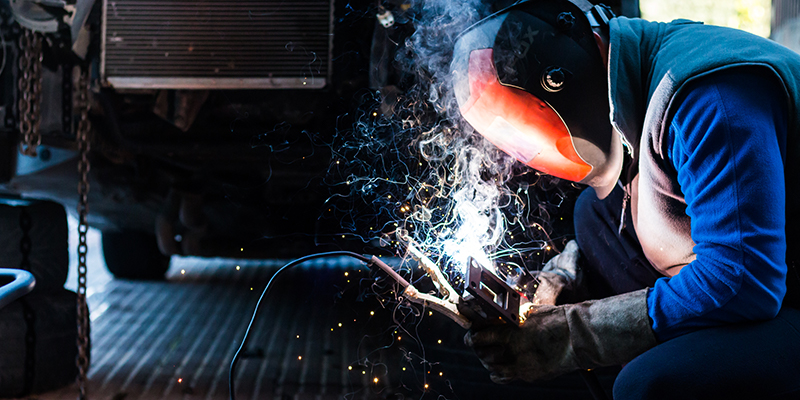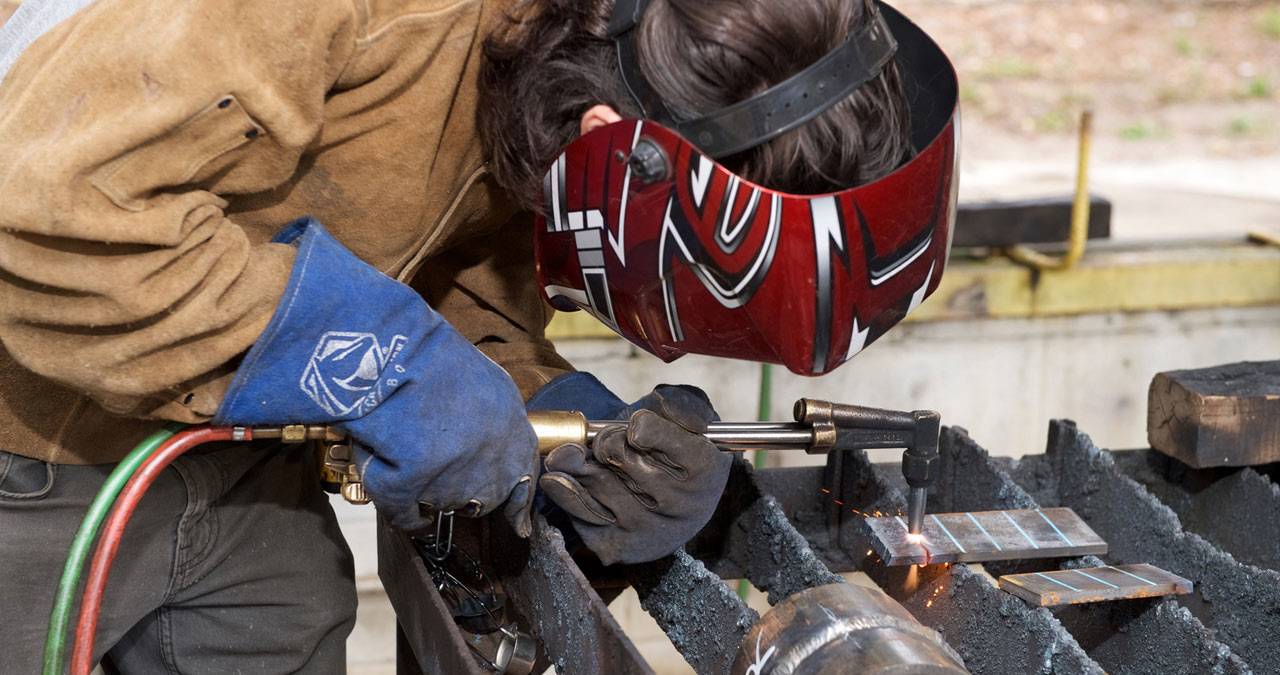What causes misalignment happens and how Belgrade Fabrication solves it
Wiki Article
Usual Welding Repair Service Issues and Just How to Address Them Successfully
Welding repairs usually come across an array of concerns that can endanger the honesty of the last item. Usual issues include inadequate penetration, porosity, and imbalance, amongst others. Each problem provides special obstacles that call for certain methods for resolution. Recognizing these issues is necessary for welders aiming to boost their outcomes and abilities. This conversation will check out these common welding repair service concerns and reliable techniques to address them.Inadequate Infiltration
Inadequate infiltration happens when the weld steel falls short to completely fuse with the base material, causing weak joints and prospective architectural failings. This concern often comes from inadequate warm input, inaccurate electrode angle, or incorrect welding speed. Welders might come across poor infiltration because of a mistake of the essential parameters for a details material thickness or kind. Additionally, contamination on the base material's surface can hinder reliable bonding, worsening the issue. To deal with poor penetration, welders need to ensure ideal settings on their equipment and maintain a clean work surface area. Routine inspection of welds is advised to recognize any kind of shortages early, permitting prompt corrections and the avoidance of jeopardized architectural honesty in welded settings up.Porosity
Porosity is a typical flaw in welded joints that manifests as little gas bubbles caught within the weld steel. This problem can compromise the stability of the weld, bring about reduced stamina and possible failure under stress and anxiety. Montana Mobile Welding and Repair Belgrade Fabrication. Porosity usually arises from contamination, moisture, or improper welding strategies, which permit gases to escape right into the molten weld pool. To address porosity, welders need to guarantee correct surface area preparation, maintain a clean workplace, and use suitable welding specifications. Additionally, choosing the ideal filler product and securing gas can mitigate gas entrapment. Routine inspection and screening of welds can assist identify porosity early, assuring prompt rehabilitative activities are taken, thus preserving the quality and integrity of the welded frameworkMisalignment
Imbalance in welding can emerge from numerous factors, including inappropriate arrangement and thermal expansion. Understanding the root causes is necessary for efficient resolution. Numerous adjustment techniques are readily available to realign elements and ensure architectural integrity.Root causes of Imbalance
Welding imbalance typically comes from a selection of underlying issues that can endanger structural integrity. One primary reason is inappropriate fit-up of parts prior to welding, which can bring about voids and uneven surfaces. Variants in thermal expansion throughout the welding procedure can additionally result in distortion, especially if the materials being joined have various coefficients of development. Additionally, poor fixturing and securing may fall short to hold elements safely in position, causing activity throughout welding. Improperly conserved equipment, consisting of welding makers and tools, may present variances in the weld grain, further adding to misalignment. Ultimately, operator mistake, stemming from insufficient training or experience, can also play a considerable function in producing misaligned welds.Modification Strategies Readily Available
Addressing misalignment successfully needs a combination of rehabilitative strategies customized to the particular issues available. One usual technique is making use of jigs or components to hold elements in the correct position throughout welding, making certain constant positioning. Furthermore, pre-heating the materials can help in reducing distortion and boost fit-up. For significant misalignment, mechanical adjustment techniques, such as making use of hydraulic jacks or clamps, can be utilized to remedy the placement prior to welding. Post-weld warm treatment might also be necessary to eliminate tensions caused by misalignment. Ultimately, mindful inspection and change throughout the configuration phase can avoid imbalance problems from ending up being considerable problems, advertising a smoother welding procedure and enhancing general structural honesty.Distortion
Distortion is an usual challenge in welding that can occur from various elements, consisting of unequal cooling and heating. Comprehending the causes of distortion is essential for executing efficient prevention strategies. Addressing this problem not just improves structural honesty however additionally improves the overall quality of the weld.Reasons for Distortion
When based on the extreme heat of welding, materials usually undergo modifications that can result in distortion. This sensation largely arises from thermal expansion and contraction throughout the welding procedure. As the weld area heats up, the product expands; upon air conditioning, it contracts, which can develop interior stresses. Additionally, irregular heating throughout a workpiece can aggravate these tensions, resulting in warping or flexing. The sort of material Montana Mobile Welding and Repair Welding additionally plays a considerable role; metals with differing thermal conductivity and coefficients of expansion may respond in different ways, leading to unforeseeable distortions. Moreover, bad joint layout and insufficient fixturing can add to imbalance throughout welding, enhancing the probability of distortion. Understanding these reasons is important for effective welding repair and prevention strategies.Prevention Techniques
Reliable avoidance techniques for distortion during welding emphasis on controlling warmth input and making sure appropriate joint style. Preserving a regular heat input aids to reduce thermal development and contraction, which can result in distortion. Using methods such as preheating the workpiece can also lower the temperature gradient, advertising consistent home heating. Additionally, choosing suitable joint layouts, such as T-joints or lap joints, can boost security and decrease anxiety focus. Executing correct fixturing to safeguard the workpieces in position additionally help in maintaining placement during the welding procedure. Staggered welding sequences can distribute warmth a lot more uniformly, stopping local distortion. By using these methods, welders can considerably decrease the likelihood of distortion and improve the general quality of their welds.Breaking
Breaking is a typical issue come across in welding repair work, typically arising from numerous elements such as incorrect air conditioning rates, product choice, or poor joint prep work. The incident of splits can greatly compromise the stability of the weld, causing possible failings throughout procedure. To resolve this problem, welders should initially evaluate the origin, making certain that products work and appropriately picked for the details application. Additionally, regulating the air conditioning price throughout the welding procedure is essential; quick air conditioning can cause stress and anxiety and lead to fracturing. Correct joint design and preparation also add to minimizing the threat. Applying these approaches can boost weld quality and sturdiness, inevitably decreasing the probability of cracking in ended up weldments.
Insufficient Fusion
A significant concern in welding repair work is incomplete blend, which happens when the weld steel does not properly bond with the base material or previous weld passes - Montana Mobile Welding and Repair. This flaw can lead to weak points in the joint, potentially endangering the integrity of the welded structure. Aspects adding to insufficient blend consist of inadequate warmth input, inappropriate welding technique, and contamination of the surfaces being signed up with. To address this issue properly, welders need to assure appropriate pre-weld cleansing and surface area preparation, as well as readjust their welding specifications to attain appropriate infiltration and fusion. Normal evaluation throughout the welding process can also aid identify insufficient blend early, permitting prompt corrective actions to improve the total top quality of the weldOverheating
While welding repair work can boost architectural honesty, overheating provides a considerable obstacle that can bring about product degradation. Extreme heat during welding can alter the mechanical residential properties of steels, leading to decreased strength, raised brittleness, and bending. This phenomenon is specifically critical in high-stress applications where architectural integrity is paramount. Identifying getting too hot can include aesthetic assessments for discoloration or distortion, in addition to keeping track of temperature during the welding procedure. To alleviate the dangers connected with overheating, welders need to employ suitable strategies, such as managing warm input, changing traveling rate, and utilizing ideal filler materials. Furthermore, executing pre- and post-weld warmth therapies can help recover product residential properties and boost the total high quality of the repair, ensuring lasting efficiency and safety and security.Regularly Asked Concerns
What Are the Common Indicators of a Welding Problem?

Exactly How Can I Check My Welds for Quality?
To test welds for top quality, one can use aesthetic assessments, ultrasonic testing, and radiographic approaches. Each technique assures architectural stability, recognizes defects, and confirms adherence to specified requirements, eventually enhancing the dependability of the bonded joints.What Security Precautions Should I Take While Welding?
When welding, one must focus on safety and security by using suitable personal safety devices, guaranteeing appropriate air flow, safeguarding flammable products away, preserving a tidy office, and knowing environments to stop injuries and accidents.Can I Repair a Weld Without Redoing the Entire Joint?
Repairing a weld without redoing the entire joint is feasible, depending on the damage (Montana Mobile Welding and Repair Welding). Methods such as grinding, including filler material, or utilizing a welding process can properly address certain problems while maintaining the surrounding structureWhat Devices Are Crucial for Reliable Welding Fixes?
Necessary devices for reliable welding repair services include a welding machine, cord brush, mill, safety equipment, clamps, and filler products. Each device plays an essential role in making sure high quality and safety and security during the repair service procedure. Porosity normally arises from contamination, moisture, or improper welding techniques, which allow gases to escape into the liquified weld pool. Inadequately conserved devices, consisting of welding devices and tools, may introduce incongruities in the weld bead, further contributing to misalignment. When subjected to the intense heat of welding, materials frequently undergo modifications that can lead to distortion. Splitting is a common concern encountered in welding repair work, typically resulting from numerous elements such as inappropriate air conditioning prices, material option, or inadequate joint preparation. A substantial problem in welding repair services is incomplete combination, which happens when the weld metal does not effectively bond with the base product or previous weld passes.Report this wiki page